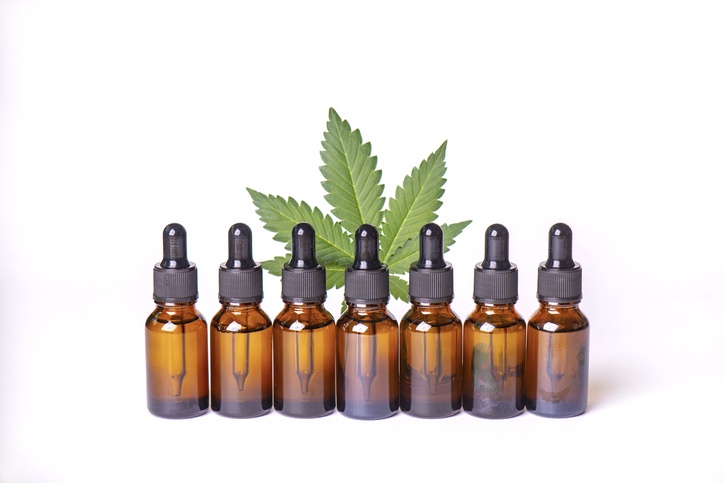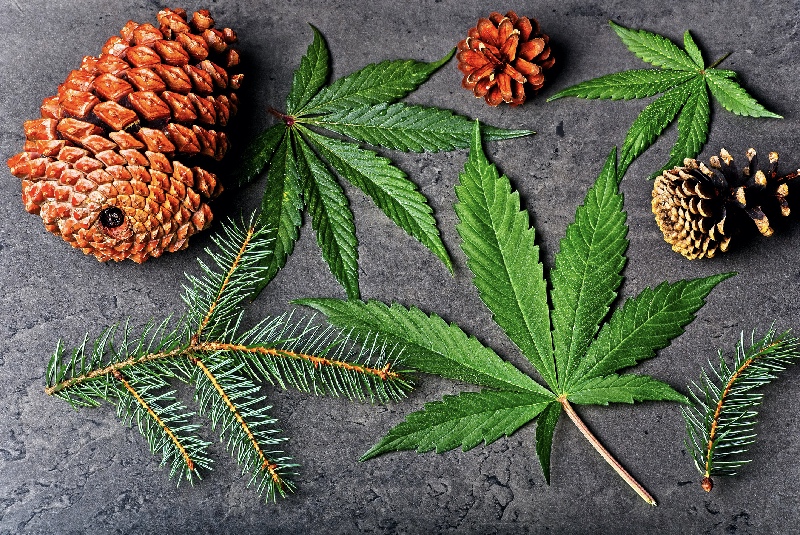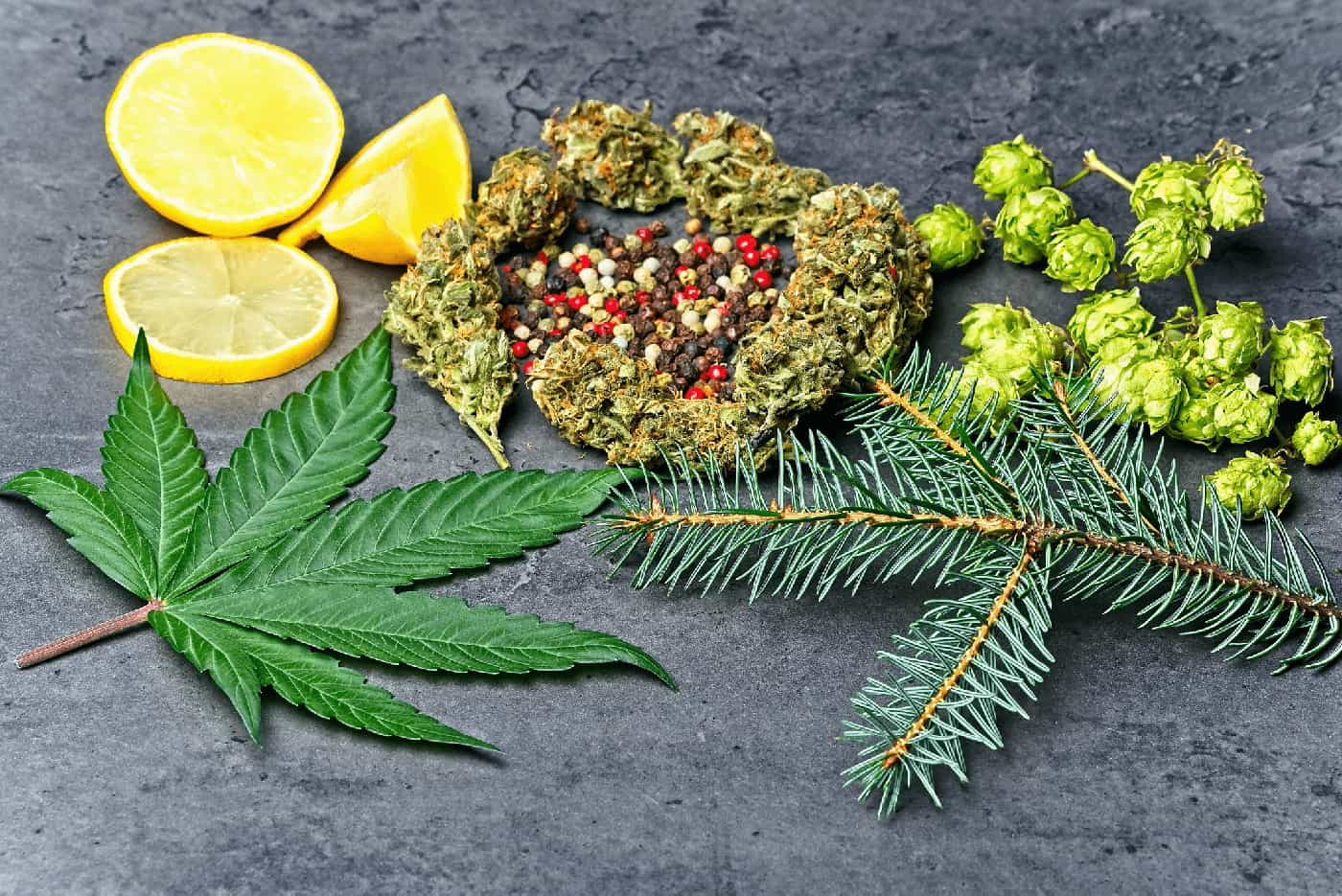What are Terpenes? Simply put, terpenes give plants their distinctive aromas. They are organic compounds found in many plants such as hemp, oregano, lavender, geranium, lemons, and conifers. The hemp plant gives us CBDA oil but also hundreds of other compounds, including terpenes.
There is ongoing research regarding the potential effectiveness of terpenes and their beneficial interaction with CBDA.
Here at FluxxLab™, we have made it a point to include terpenes such as beta-caryophyllene in our exceptional range of products. We believe that the more natural our end product, the more effective it will be.
Analyzing the hemp plant
Hemp is part of the genus Cannabis Sativa L, a plant indigenous to eastern Asia but now cultivated worldwide. It has been cultivated throughout recorded history for its many uses that include industrial fiber, seed oil, food, recreation, and medicine.
The hemp plant contains hundreds of cannabinoids and other compounds such as terpenes.
One of these compounds is CBDA, or cannabidiolic acid, which is being researched for its potential ability to relax the body and help with alleviating inflammation, nausea, and depression.
It is estimated that the hemp plant contains more than 85 phytocannabinoids and up to 480 compounds. The best-known ones are probably THC, known for its hallucinogenic and psychedelic effects, and CBD. Cannabis, however, also includes several other phytocannabinoids such as CBC, CBN, CBG, and THCV.
Alongside cannabinoids, the hemp plant contains terpenes, which are aromatic metabolites found in almost all plants.
We still know very little about the effects of these compounds. The medical and research communities are still trying to establish the possible impact of these substances on the human body. However, initial findings regarding terpenes are promising and labs across the world are carefully looking into them.
What are terpenes?
If you can smell it, it has terpenes.
Terpenes are found in the oils of several plants: across the natural world, there are over 20,000 different terpenes. Of particular importance to us is the hemp plant, which contains several terpenes in high concentrations.
The medical world has categorized terpenes according to their scent.
For example, beta-caryophyllene is found in abundance in hemp, but also in basil, cloves, cinnamon, black pepper, and lavender.
Besides beta-caryophyllene, the hemp plant also contains myrcene, linalool, d-limonene, alpha-pinene, humulene, and nerolidol, among others. It is thought that hemp contains more than 200 terpenes, although more research is required to analyze their concentration and potential effect.
Why are terpenes important?
Terpenes display encouraging results in terms of their possible beneficial effects on the human body.
Each terpene has been analyzed for its effectiveness and its potential helpful features with regards to specific illnesses, ailments, and conditions.
Their wide range of effect is why a 2017 article, published in the journal Frontiers in Aging Neuroscience, concluded that essential oils should be “developed as multi-potent agents against neurological disorders with better efficacy, safety, and cost effectiveness.”
The entourage effect
Researchers are particularly interested in the interaction of terpenes with CBD and CBDA products.
For example, limonene is a terpene encountered in lemons and citrus fruit. It appears to have antifungal features. Linalool is another terpene, found in lavender. It is believed to be an antiseptic with calming properties.
When you combine limonene with linalool and hundreds of other terpenes, as happens with hemp, some theorize that their collective effect is stronger. This is called the entourage effect.
The entourage effect describes how different substances, when taken together, act better and improve each other’s effectiveness compared to if they were taken separately.
Research supports this claim: a study in 2018 displayed “a firm foundation for Cannabis synergy, and support for botanical drug development vs. that of single components.”
Which terpenes are found in hemp?

With over 200 terpenes in the hemp plant, we’re still in the early stages of understanding their exact qualities and potential effectiveness.
What we do know is the effect some of them have, as they have been studied in other plants. The best known of these include beta-caryophyllene, limonene, myrcene, linalool, humulene, terpinolene, and pinene.
Beta-caryophyllene
Beta-caryophyllene is the terpene giving hemp, cinnamon, cloves, and basil their aroma. While research on caryophyllene is somewhat limited, it seems to activate the CB2 receptors of our endocannabinoid system—the system responsible for maintaining the body’s natural balance.
The activation of CB2 receptors reduces inflammation, making beta-caryophyllene a potentially helpful tool in the fight against chronic inflammation. Less inflammation means less pain and fewer damaging consequences on brain function—thus reducing the risk for developing brain diseases.
This is supported by a 2014 study that used caryophyllene to treat mice suffering from colitis. Caryophyllene helped decrease the colon inflammation and reduce their pain.
Limonene
Research suggests that limonene is the second most abundant terpene in nature. It is, therefore, not surprising that it is also found in hemp. As its name suggests, limonene the characteristic citrus scent associated with lemon, oranges, and grapefruit.
Limonene is considered an antioxidant and can be helpful with anxiety and depression. It also has antifungal properties and has been considered as a tool for fighting fungi in the human body
Limonene is used in cosmetics, household cleaners, and as a flavoring agent in food. People also use limonene for obesity, cancer, and bronchitis, although these uses are not currently supported by studies.
Linalool
An example of a powerful terpene is linalool, which gives lavender its characteristic scent. Linalool is believed to possess antimicrobial, relaxing, and calming qualities.
Lavender, mint and cinnamon all have linalool, which has been researched on mice for its anxiolytic effects and for its anticonvulsant potential, in another 2017 study.
Lavender has been used as an antiseptic since the Roman times. Indeed, its very name comes from the Latin word lava, to wash, as it was used for soap making. It was also used to help insomnia sufferers relax and overcome their sleep problems. Tutankhamun’s tomb contained traces of still-fragrant lavender, and Cleopatra used it to seduce Julius Caesar and Mark Antony.
Lavender is also popular in Asian traditional medicine, where it’s used to help people relax. More recently, lavender was used by doctors during WWII to heal wounds.
All this has been supported by recent research and controlled trials. A controlled study found lavender comparable to paroxetine, a selective serotonin reuptake inhibitor (SSRI), for depression. And lavender improved the benefits of imipramine, a common tricyclic antidepressant.
Pinene

As the name suggests, pinene smells like a pine tree forest. Hemp contains pinene, and so do rosemary, basil, dill, and pine nuts.
Pinene shows great promise as a bronchodilator, aiding in respiratory issues such as asthma. A 2011 study found that pinene may be effective as an antiviral agent as well.
Pinene is also thought to be helpful as an anti-inflammatory, as a study undertaken in 2014 suggests, and to relieve pain: a 2010 study on mice showed pinene’s promise in pain management.
Myrcene
Hops, lemongrass, hemp and thyme share the same earthy, ripe aroma, thanks to myrcene.
Myrcene is best known as a relaxant, and herbal medicine has a long history of using it as a sleep aid. Its namesake, Myrcia sphaerocarpa, is a medicinal shrub from Brazil. It is traditionally used to treat diabetes, diarrhea, dysentery, and hypertension.
A 2014 study analyzing Myrcene’s effects on mice after a stroke found it acted as an effective brain antioxidant as one. It would appear that it also has anti-inflammatory qualities, according to a 2015 study.
Humulene
Humulene or α-caryophyllene, gives coriander and basil their distinctive aroma; a scent shared with the cannabis plant.
Several studies have found that humulene can fight inflammation. According to a 2009 study, humulene exhibited marked anti-inflammatory properties in cases of allergic inflammation. Humulene is also analgesic and acts as an appetite suppressant.
Terpinolene
The scent of terpinolene is what cannabis, safe, rosemary, and nutmeg have in common. Thanks to terpinolene’s strong aromatic properties, it is often used in soaps, perfumes, lotions, and insect repellents.
Its calming, anti-anxiety potential was researched in a 2013 study that found that terpinolene had a sedative effect in mice when inhaled.
How CBDA and terpenes work together
Now that the medical community is studying terpenes more thoroughly, researchers are looking into the increased efficiency of CBDA with terpenes as opposed to CBDA on its own.
Preliminary studies suggest that the entourage effect is real.
Apart from the possible helpful effect of terpenes on their own, laboratories are investigating whether terpenes taken in conjunction with CBDA improve its effectiveness and efficiency in the human body.
A research study about THC and its interaction with terpenes confirmed the existence of an entourage effect, whereby the terpenes improved the effectiveness of THC. And a study on epilepsy with CBD-rich and purified CBD showed that the CBD which contained terpenes was more helpful, thus confirming the entourage effect.
Similar studies are underway with regards to CBDA and terpenes.
CBDA and terpenes in FluxxLab™
We are always striving to give the best to our customers. That is why we include terpenes in our products, particularly beta-caryophyllene.
We believe that CBDA and terpenes work better together. If you’re looking for the best CBDA product on the market, head over to our online store at FluxxLab. Our CBDA oil contains a full range of terpenes and tastes great. We ship from coast to coast in the United States.


I think I am going to try some cbda, is there a product you would recommend for a first time user? I am not sure what to go with.
While I dig the benefits of terpenes, the taste is less than desirable.
Awesome information.
Sharing this with my friends.
Sharing this with wife.
CBD for the win!
Passing this on.
Great article! Would highly recommend reading this!